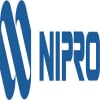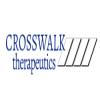Bristol-Myers Squibb Co.'s bid to catch Merck & Co. in combination immunotherapy for lung cancer will hinge, in part, on whether counting tumor mutations proves an effective way of identifying which patients will benefit.
Despite the rapid clinical and commercial success of cancer immunotherapy, many patients still don't respond well or at all to the treatments. To date, drugmakers have relied on measuring a protein known as PD-L1 to zero in on likely responders.
The success of a Phase 3 trial run by Bristol-Myers, however, could support greater use of another biomarker called tumor mutational burden or TMB.
Results from the study, presented Monday at the annual meeting of the American Association of Cancer Research, offer the first real clinical validation of TMB as an effective method to select patients for immunotherapy treatment.
"This sets a very important precedent going forward," said David Fabrizio, cancer immunotherapy leader at Foundation Medicine Inc., which makes the TMB test used by Bristol-Myers. The results may also send a signal to Merck & Co. and Roche AG, which are evaluating the biomarker in their own immunotherapy research.
Oncologists say adoption of TMB could help find patients who would otherwise not receive immunotherapy. Yet adding another biomarker to an already complex treatment landscape imposes logistical difficulties and could further muddy comparisons between immunotherapy studies.
Counting mutations
As a concept, TMB is fairly straightforward. Using genetic sequencing, researchers can compare the number of mutations present in the DNA of a tumor to the number present in normal tissue.
Mutation count, in turn, is a proxy for the number of neo-antigens expressed by tumors and a gauge of how "visible" a cancer is to the immune system. More visible tumors means an immune system has a better chance at recognizing the cancer, but checkpoint molecules like PD-L1 can prevent T cells from attacking the tumor.
Patients with high TMB scores, measured by the number of mutations per megabase of sequenced DNA, are thought to be better candidates for immunotherapy — a hypothesis supported mainly by retrospective analysis of clinical studies before now.
Validating results?
At AACR, Bristol-Myers reported data from the first part of a study called CheckMate-227, testing a combination of the pharma's immunotherapies Opdivo (nivolumab) and Yervoy (ipilimumab) in previously untreated patients with metastatic non-small cell lung cancer (NSCLC). The study also randomized patients to Opdivo monotherapy, although that was not the focus of the initial analysis.
Results showed the immunotherapy combination cut the risk of disease worsening or death by 42% versus standard chemotherapy among patients with a TMB score of greater than 10 mutations per megabase.
Importantly, patients with PD-L1 expression levels both less than and greater than 1% benefited — suggesting TMB had helped identify patients who could benefit from immunotherapy but normally would not be selected by PD-L1 testing.
CM-227 results among patients with high TMB
| Hazard ratio for PFS | |
|---|---|
| Overall | 0.58 |
| <1% PD-L1 | 0.48 |
| > or = 1% PD-L1 | 0.62 |
SOURCE: New England Journal of Medicine
Patients in the trial with low TMB scores performed worse on combination immunotherapy than those on chemotherapy, reinforcing the idea that using TMB correctly identified likely responders.
But in a somewhat contradictory result, patients with at least 13 mutations per megabase who were only given Opdivo saw no progression-free survival (PFS) advantage to immunotherapy treatment.
It's also not clear how easy obtaining TMB will be. In CheckMate-227, only 58% of randomized patients had valid data for TMB-based efficacy analysis. Investigators for the study report this was a result of the limited tissue requested for analysis in the trial. In clinical practice, they expect TMB could be determined in between 80% and 95% of patients undergoing testing.
Still, Roy Herbst, chief of medical oncology at the Yale Cancer Center, believes the result do validate TMB as a marker for response and progression-free survival. However, Herbst noted that, with no survival data from the trial yet, TMB's utility on that measure remains an open question.
Bristol-Myers says a TMB cutoff of 10 mutations per megabase includes about 45% of the NSCLC patient population represented by the trial, which excluded patients with EGFR and ALK mutations.
Learning from failure
Bristol-Myers' bet on TMB came out of a significant setback almost two years ago.
In a major study known as CheckMate-026, Opdivo failed to deliver a PFS or overall survival (OS) benefit over chemo in previously untreated NSCLC patients who expressed PD-L1 at levels greater than 5%. Bristol-Myers had deliberately set the threshold low in hopes of proving Opdivo's benefit in a broader set of the NSCLC patient population.
The surprising miss opened the door for Merck, which quickly gained market share after securing first-line approval for Keytruda monotherapy in patients with PD-L1 higher than 50%.
But a retrospective analysis of CheckMate-026 suggested Opdivo helped extend PFS among patients with high TMB — hinting at a way to better design subsequent lung cancer studies.
"I think it really solidified the strategy for BMS."

David Fabrizio
Cancer immunotherapy leader, Foundation Medicine
"Even though it was a retrospective study, it still gave a lot of promise to TMB as a biomarker and I think it really solidified the strategy for BMS," said Foundation's Fabrizio.
Fast forward to October of last year, when Bristol-Myers decided to elevate analysis of PFS by TMB to a co-primary endpoint of the study. While the move was met with some skepticism when it was later announced, the pharma's decision has now paid off with a statistically significant result.
Bristol-Myers is evaluating TMB in over 100 studies across multiple tumor types and clinical programs (although TMB may not feature in the primary analysis of all of those trials).
New hurdles for physicians, patients
Adopting TMB will present challenges for physicians, however.
To start, weighing results across clinical trials becomes more difficult when drugmakers are stratifying patient populations by both PD-L1 and TMB.
"You're comparing apples to oranges," notes Yale's Herbst. "If you're using different parameters for selection, how do you compare the drugs?"
Physicians, particularly those practicing outside of major medical centers, may be less aware of TMB and therefore less comfortable testing their patients for it.
"You're comparing apples to oranges."

Roy Herbst
Chief of medical oncology, Yale Cancer Center
It's a challenge Bristol-Myers hopes to address. On a recent earnings call, company CEO Giovanni Carforio said the pharma is focusing its educational and continuing research efforts on community oncologists in an effort to build awareness.
More practically, however, TMB testing requires next-generation sequencing (NGS) panels rather than the more routine immunohistochemistry used for PD-L1 testing. Such panels can take two weeks or more to return results — valuable time for patients with advanced lung cancer, explained Alice Shaw, an oncologist at Massachusetts General Hospital Cancer Center.
NGS testing is also expensive. Foundation Medicine expects its recently approved Foundation One CDx test — which measures TMB as well as mutations in over 300 genes — to cost about $3,000 this year under coverage by Centers for Medicare and Medicaid Services.
Roy Baynes, head of global clinical development at Merck Research Laboratories, pointed to these hurdles as points in PD-L1's favor, noting Merck's success in using the protein biomarker to secure approvals for Keytruda. Even so, Baynes says Merck is currently working on evaluating the measure.
Common standards
TMB's success as a biomarker could come down to how uniformly the industry agrees to consistent standards of measurement.
One of the main drawbacks to PD-L1 is a general lack of concordance between the various assays as well as the cut-offs used to stratify patients in clinical studies.
If drugmakers, regulators and diagnostic companies like Foundation can agree to set a common approach for counting mutations and validating TMB, a clearer picture could emerge of which patients should be given immunotherapy.
PD-L1 and TMB could also be used together. While each test identifies different patient populations, individuals who are positive for both could represent a clear case for prescribing immunotherapy, at least in lung cancer.
For now, CheckMate-226 is just one prospective signal that TMB could work and PD-L1 testing isn't likely to cede ground immediately. Bristol-Myers' study, for example, will continue in order to test the immunotherapy combo's effect on OS in patient groups selected by PD-L1 expression levels.
But nearly two years after a damaging setback crimped Bristol-Myers ambitions in lung cancer, the pharma's second major biomarker bet may give it a chance to compete.






















